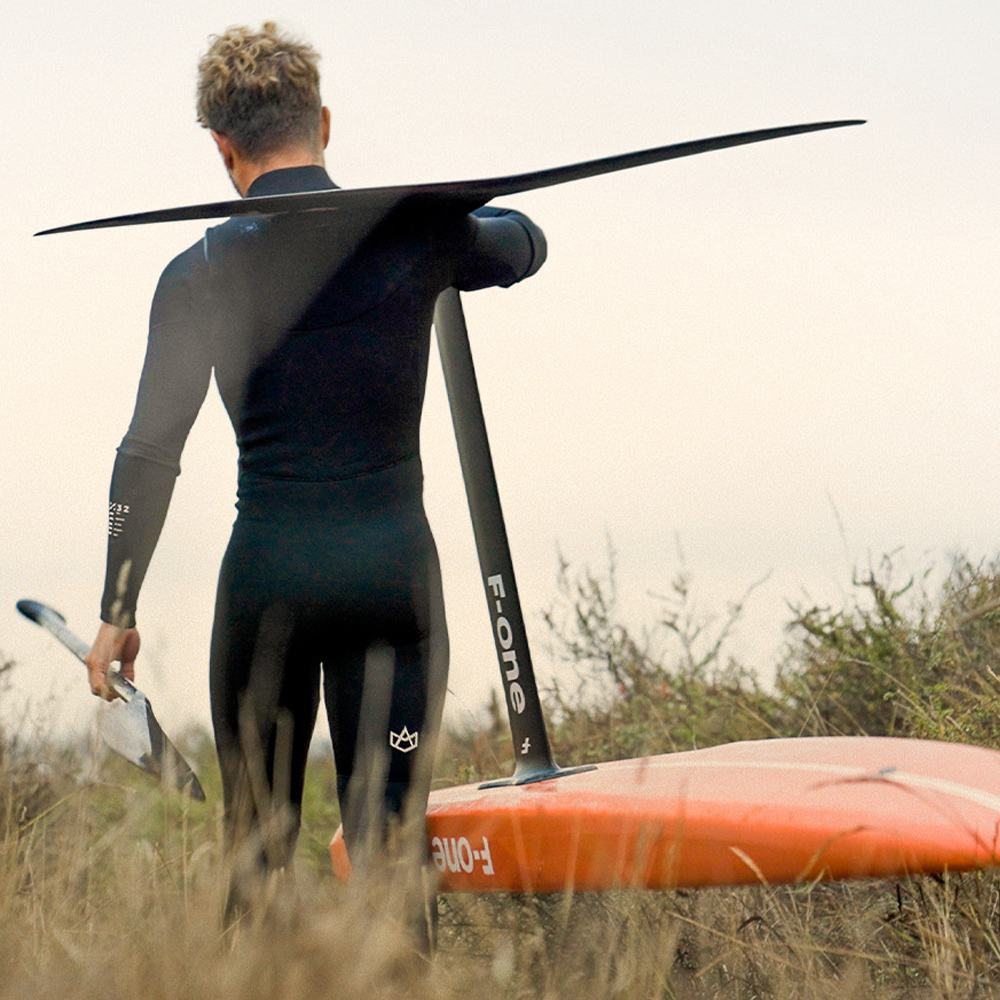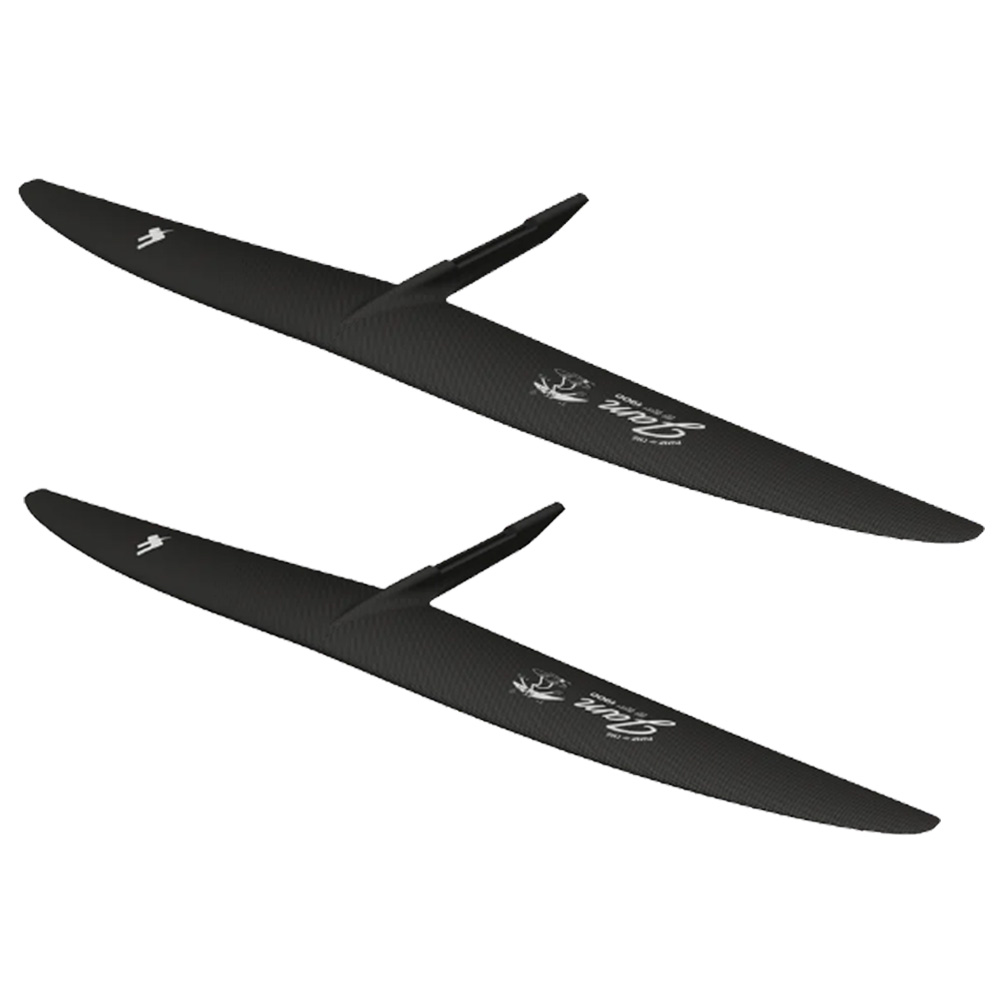The size and aspect ratio of a foil front wing can have a significant impact on the performance of your wing foil setup. H20 Sports stock foil wings from Fanatic, F-One, Duotone, RRD, Cabrinha, Neilpryde and many more... Here we talk about the difference the size and aspect ratio makes to the performance of your wing
Size: A larger front wing will generally provide more lift and stability, making it easier to get up on the foil and maintain speed in light wind conditions. However, a larger wing may also require more power to lift out of the water, and can be more difficult to maneuver at high speeds or in choppy water. A smaller front wing, on the other hand, will generally require less power to lift out of the water, and can be more maneuverable and responsive at high speeds. However, a smaller wing may also be less stable and more difficult to control, especially in choppy or gusty conditions.

Aspect ratio: The aspect ratio of a foil wing refers to the relationship between its length and its width. A higher aspect ratio (longer and narrower) wing will generally provide greater lift and efficiency at higher speeds, making it ideal for racing or high-performance riding. However, a high aspect ratio wing can also be more difficult to control and less stable at low speeds or in choppy water. A lower aspect ratio (shorter and wider) wing will generally provide more stability and control at lower speeds, making it easier to learn and to ride in a wider range of conditions. However, a lower aspect ratio wing may also be less efficient at higher speeds, and may not be as suitable for advanced riders who want to push their limits.
Ultimately, the best front wing size and aspect ratio for you will depend on your individual needs and preferences, as well as your skill level and riding style. Experimenting with different wing configurations can help you find the perfect setup for your goals and conditions.

Now moving on to the length of a foil fuselage...
A foil fuselage can have a significant impact on the performance of a foil setup. Here are some general guidelines:
Stability: Longer fuselages tend to provide greater stability and smoother rides, especially in choppy or gusty conditions. This is because they provide more surface area for the water to flow over, which can help to dampen any sudden movements or changes in direction.
Maneuverability: Shorter fuselages tend to be more maneuverable and responsive, making them ideal for freestyle riding or for riders who want to make quick turns and transitions. This is because they require less force to turn or change direction, and can also be easier to control in tight spaces.
Speed: Longer fuselages tend to be more efficient and faster than shorter fuselages, especially at higher speeds. This is because they provide a longer surface area for the water to flow over, which can help to reduce drag and increase lift. However, longer fuselages may also be more difficult to control at high speeds, especially for novice riders.
Foil size: The length of the fuselage can also affect the size and shape of the foil wings that are attached to it. A longer fuselage may require larger wings to achieve the desired lift and performance, while a shorter fuselage may require smaller wings for better control and maneuverability.
Ultimately, the best fuselage length for you will depend on your individual needs and preferences, as well as your skill level and riding style. Experimenting with different fuselage lengths can help you find the perfect setup for your goals and conditions.
You won't be able to dismiss this by usual means (escape or click button), but you can close it programatically based on user choices or actions.